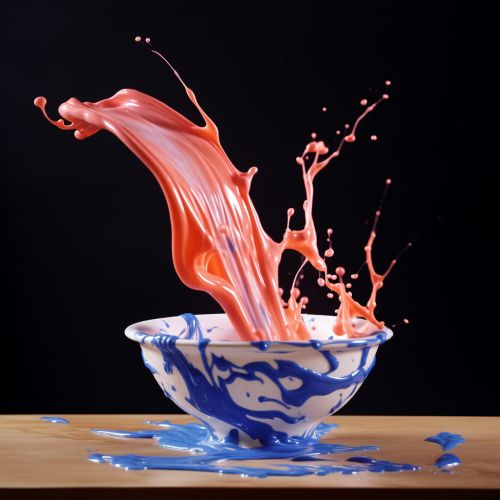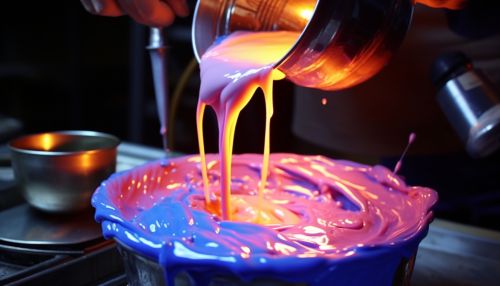Non-Newtonian Fluid
Introduction
Non-Newtonian fluids are a type of fluid that do not follow Newton's law of viscosity. This law states that the shear rate of a fluid is directly proportional to the shear stress over a range of conditions. However, non-Newtonian fluids exhibit a different behavior, where the viscosity changes with the applied shear stress. This results in unique and often counter-intuitive behavior, such as the ability to resist flow or even solidify under force.


Types of Non-Newtonian Fluids
Non-Newtonian fluids can be classified into several types, each with distinct characteristics and behaviors. These include shear-thickening fluids, shear-thinning fluids, Bingham plastics, thixotropic fluids, rheopectic fluids, and viscoelastic fluids.
Shear-Thickening Fluids
Shear-thickening fluids, also known as dilatant fluids, increase in viscosity as the shear stress increases. This means they become more resistant to flow under force. A common example of a shear-thickening fluid is a mixture of cornstarch and water, often referred to as "oobleck".
Shear-Thinning Fluids
In contrast, shear-thinning fluids decrease in viscosity as the shear stress increases, meaning they become less resistant to flow under force. These are also known as pseudoplastic fluids. Examples include ketchup, whipped cream, and blood.
Bingham Plastics
Bingham plastics behave as a solid until a certain stress threshold is reached, after which they flow like a fluid. This threshold is known as the yield stress. Examples of Bingham plastics include toothpaste and mayonnaise.
Thixotropic Fluids
Thixotropic fluids are a type of shear-thinning fluid that also has a time-dependent change in viscosity. They become less viscous over time when shaken, stirred, or otherwise agitated, but return to their original viscosity when left undisturbed. Paints and clays are examples of thixotropic fluids.
Rheopectic Fluids
Rheopectic fluids, on the other hand, are shear-thickening fluids that also exhibit a time-dependent change in viscosity. They become more viscous over time when subjected to a constant shear stress. Few examples exist, but some types of printer's ink are rheopectic.
Viscoelastic Fluids
Viscoelastic fluids exhibit properties of both viscous fluids and elastic solids. They can deform and flow under stress like a fluid, but also store and recover energy like a solid. Examples include marshmallows and certain types of foam.
Applications of Non-Newtonian Fluids
Non-Newtonian fluids have a wide range of applications in various industries and fields of study. These include food and beverage, cosmetics, pharmaceuticals, engineering, and even sports equipment.
Food and Beverage
In the food and beverage industry, the unique properties of non-Newtonian fluids are used to improve the texture and mouthfeel of products. For example, the shear-thinning property of sauces and gravies allows them to pour easily but still coat food effectively.
Cosmetics
In cosmetics, non-Newtonian fluids such as creams and lotions spread easily when applied with force but remain in place when at rest, thanks to their shear-thinning properties.
Pharmaceuticals
In the pharmaceutical industry, non-Newtonian fluids are used in drug delivery systems. For example, some eye drops are shear-thinning so they can be easily administered but then thicken upon contact with the eye to prolong contact with the drug.
Engineering
In engineering, non-Newtonian fluids are used in applications such as shock absorbers and dampers. Shear-thickening fluids, for example, can provide increased resistance to sudden forces, making them useful in protective equipment.
Sports Equipment
Non-Newtonian fluids are also used in sports equipment. For example, shear-thickening fluids are used in some protective gear, such as shin guards, to provide a flexible fit but harden upon impact to protect against injury.
Conclusion
Non-Newtonian fluids, with their unique and often counter-intuitive behavior, are a fascinating area of study in fluid mechanics. Their wide range of applications, from everyday products like food and cosmetics to specialized uses in engineering and sports equipment, make them a significant and interesting field of research.
